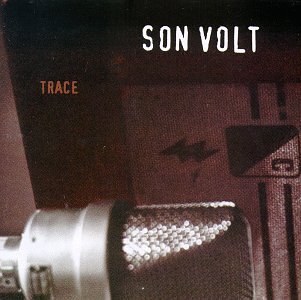Son Volt A Retrospective Rarity
Title, Artist, Time. 1, Going, Going Gone, Son Volt, 3:44. 2, Driving the View (4-track Demo, Son Volt, 2:48. 3, Medicine Hat (WFUV), Son Volt, 4:03. 4, Flow (Acoustic Cafe), Son Volt, 2:12. Ther's a few good rarities here. I would recomend this version of Flow. It's pretty dang.
Son Volt A Retrospective Rarity 2

In 1995, I would have put money on Jay Farrar having a more celebrated post-Uncle Tupelo career than Jeff Tweedy. After the back-to-back releases of Wilco's lackluster A.M. And Son Volt's lived-in Trace, Farrar seemed destined for greatness, and Tweedy destined for obscurity. A few years later, I saw how wrong I was: It wasn't simply that Being There was that great a follow-up, but that Straightaways was such a fatally dull second album. Full of bland retreads of Trace songs, it started off ho-hum and went downhill from there, backloaded with so many downtempo, amelodic tracks that even Farrar couldn't seem to muster a committed performance. As Wilco became one of the most critically celebrated bands in America, Son Volt tried to broaden its sound on Wide Swing Tremolo, but they were so stuck in a rut they could only disband, and Farrar released a couple of solo records that re-established a core audience without attracting much attention. Now, amid a softening nostalgia for the mini-movement Uncle Tupelo helped define and plans for a new Son Volt album this summer, Rhino is issuing A Retrospective: 1995-2000.
A RESOURCE FOR EDUCATORS. The Metropolitan Museum of Art. The Metropolitan Museum of Art's teacher training programs and accompanying materials are made possible through a generous grant from Mr. From Library Journal. Robins (art history, Emory Univ.) has produced the first significant general survey of ancient Egyptian art in the English language since Cyril Aldred's Egyptian Art in the Days of the Pharaohs, 3100-320 BC (Oxford Univ., 1980) and W. Stevenson Smith's The Art and Architecture of Ancient Egypt. Robins (art history, Emory Univ.) has produced the first significant general survey of ancient Egyptian art in the English language since Cyril Aldred's Egyptian Art in the Days of the Pharaohs, 3100-320 BC (Oxford Univ., 1980) and W. Stevenson Smith's The Art and Architecture of Ancient Egypt (Penguin, 1981). The art of ancient egypt robbins pdf printer free. The ancient Egyptians created some of the world's most beautiful art and architecture. To this day, this ancient civilization--which produced the great pyramids, the riddle of the Sphinx, and the riches of Tutankhamun--exerts a strong hold on our imaginations. Now, in Ancient Egypt, eminent Egyptologist David P. From the awesome grandeur of the Great Pyramids to the delicacy of a face etched on an amulet, the power of ancient Egyptian art persists to this day. Spanning three thousand years, this illustrated history offers a thorough and delightfully readable introduction to the artwork.Missing.
Making absolutely no promise of definitiveness, the title says it all: It's 20 tracks culled from the band's three albums, along with a handful of covers and live takes. Right off the bat, something seems askew: A Retrospective begins with 'Drown' instead of 'Windfall', which is both the lead-off track on Trace and the quintessential alt-country song, a perfect summation of the genre's aesthetic as it fuses travel, a.m. Radio, steel guitar, and a driving desire to connect to something larger and older than yourself.
That it has been relegated to second-track position seems an oversight, as are the omissions of Trace's Ron Wood cover 'Mystifies Me', Straightaways's opener 'Caryatid Easy', and Wide Swing Tremolo's 'Dead Man's Clothes'. 'Drown' (or, as I called it in college, 'You're Cousin It') is perhaps the band's most recognizable track, but in the context of A Retrospective, it sounds nearly indistinguishable from songs like 'Picking Up the Signal', 'Creosote', and 'Driving the View', all of which utilize the same formula: tight mid-tempo rhythm section with no drum fills; wide-open guitar sound; a big, low voice delivering lyrics that don't always bother to make sense. The number of such tracks on A Retrospective makes it surprisingly monotonous, especially for a best-of comp that has so much material from which to cull. Aside from the live acoustic versions of a few songs, the added extras on A Retrospective are six covers that exhibit a greater diversity than the album tracks.
Son Volt's late-90s take on the Del Reeves trucker anthem 'Looking Through a Windshield' has aged about as well as early-00s trucker caps, and Farrar can't muster the excitability on Springsteen's 'Open All Night' to sell lines like 'I'm goin' out tonight/ I'm gonna rock that joint.' But his hangdog vocals contrast dramatically with Kelly Willis's sharp croon on Townes Van Zandt's 'Rex's Blues', and Farrar sounds like a drunk staggering down the hall- in the best way possible- on Alex Chilton's 'Holocaust'. I don't begrudge Son Volt their modesty of sound and scope, nor do I hold it against them that they weren't Uncle Tupelo or Wilco. There is something refreshing, if only briefly so, about the band's unalterably limited range, especially when compared with Tweedy's self-consciously aggressive innovation.

If nothing else, A Retrospective at least marks the moment when these three bands have diverged so dramatically from each other that any comparison between them becomes more nostalgic than musical.